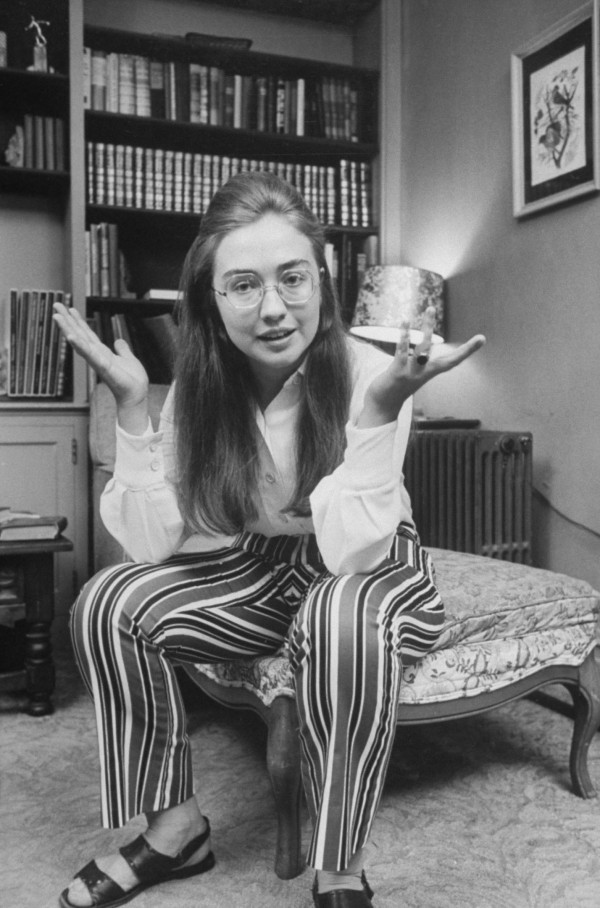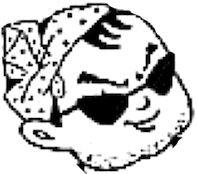身体技法
techniques du corpus, body
techniques


身体技法
techniques du corpus, body
techniques


身体技法(techniques du corpus)という用語は、マルセル・モースになる論考に由来するものである。モースによると、あらゆる身体の所作は、その担い手が属する文化の仲で コード化され、修得されていく、技法をこのように呼んだ。「身体技術」の名称も、理論的にはそれを継承しているが、本稿では「身体を護りながら発達させて い く」という点に、より多くの力点をおき、文化的なコードと同様に、生物学的な視点も加味している。
マルセル・モースは、入院した時に、看護婦(当時) の歩き方——たぶん腰の振り方——が、見覚えあるような気がしてならなかったが、その看護婦とは面識がない。そのあとで、彼女の歩き方は、ハリウッド映画 でみた、女優の歩き方と似ていると感じたそうだ。そこから、モースは、人は、心理的にアイデンティファイする人の、体の動かし方、つまり、身体技法 (techniques du corpus)が、意識的に学ばなくても、半ば無意識的に学んで、実際に身体の動かし方を通して、身についていくのだろうと、推測した。
実際に異性からのまなざしの中で社会生活をおくる (かつての)若い女性の所作は、そのようにして学んでいく可能性がある。また、ミラーニューロンの発見により、注視している身体所作と、その同じ運動領域 の神経活動が動いていない見守っている人の頭のなかでおこるという示唆は、人間の身体—神経細胞—人間のこころ、の連関性を示唆して余りある事例である。



●●●ジェ ンダー、年代、セクシュアルアイデンティティ、 今の気分などにより、このマリリン・モンローの写真(あるいは、その近傍のBill Viola, b.1951)をみているあなたの神経細胞も多様な活動をしている可能性がある。写真は左より、マリリン・モンロー、ビル・ビオラ、そしてヒラリー・クリントンである。
ミラーニューロン論争:"A mirror neuron is a neuron that fires both when an animal acts and when the animal observes the same action performed by another.[1][2][3] Thus, the neuron "mirrors" the behavior of the other, as though the observer were itself acting. Such neurons have been directly observed in human[4] and primate species,[5] and in birds.[6] In humans, brain activity consistent with that of mirror neurons has been found in the premotor cortex, the supplementary motor area, the primary somatosensory cortex, and the inferior parietal cortex.[7] The function of the mirror system in humans is a subject of much speculation. Birds have been shown to have imitative resonance behaviors and neurological evidence suggests the presence of some form of mirroring system.[5][8] To date, no widely accepted neural or computational models have been put forward to describe how mirror neuron activity supports cognitive functions.[9][10][11] The subject of mirror neurons continues to generate intense debate. In 2014, Philosophical Transactions of the Royal Society B published a special issue entirely devoted to mirror neuron research.[12] Some researchers in cognitive neuroscience and cognitive psychology consider that this system provides the physiological mechanism for the perception/action coupling (see the common coding theory).[3] They argue that mirror neurons may be important for understanding the actions of other people, and for learning new skills by imitation. Some researchers speculate that mirror systems may simulate observed actions, and thus contribute to theory of mind skills,[13][14] while others relate mirror neurons to language abilities.[15] Neuroscientists such as Marco Iacoboni (UCLA) have argued that mirror neuron systems in the human brain help us understand the actions and intentions of other people. In a study published in March 2005 Iacoboni and his colleagues reported that mirror neurons could discern whether another person who was picking up a cup of tea planned to drink from it or clear it from the table.[16] In addition, Iacoboni has argued that mirror neurons are the neural basis of the human capacity for emotions such as empathy.[17]"
DeepLによる翻訳:ミラーニューロンとは、ある 動物が行動したときと、その行動を他の動物が観察したときの両方で発火するニューロンのことである。このため、このニューロンは、あたかも観察者自身が行 動しているかのように、相手の行動を「鏡のように」映し出す。このようなニューロンは、ヒトや霊長類、鳥類で直接観察されている。ヒトでは、運動前野、補 足運動野、一次体性感覚野、下頭頂葉でミラーニューロンの活動に一致するものが見つかっている。ヒトにおけるミラーシステムの機能は、多くの憶測を呼んで いる。鳥類には模倣的共鳴行動があることが示されてお り、神経学的な証拠から、何らかのミラーリングシステムが存在することが示唆されている。しかし、ミ ラーニューロンがどのように認知機能を支えているのか、広く受け入れられている神経モデルや計算論的モデルは今のところ存在しない。ミラーニューロンとい うテーマは、激しい議論を生み続けているのだ。2014年、Philosophical Transactions of the Royal Society B は、ミラーニューロン研究に完全に特化した特集号を発行しました。認知神経科学や認知心理学の研究者の中には、このシステムが知覚と行動の結合の生理学的 メカニズムを提供していると考える者もいる(共通コーディング説を参照)。彼らは、ミラーニューロンが他者の行動を理解し、模倣によって新しい技能を習得 するために重要である可能性を主張している。ミラーシステムは観察された行動をシミュレートするため、心の理論スキルに貢献するのではないかと推測する研 究者もいれば、ミラーニューロンを言語能力に関連付ける研究者もいる。Marco Iacoboni(UCLA)らの神経科学者は、人間の脳内のミラーニューロンシステムは、他人の行動や意図を理解するのに役立つと主張している。 2005年3月に発表された研究では、Iacoboniと彼の同僚は、ミラーニューロンが、お茶の入ったカップを手に取っている他の人が、それを飲むつも りなのか、テーブルから片付けるつもりなのかを見分けることができると報告している。また、Iacoboniは、ミラーニューロンが、共感などの人間の感 情能力の神経基盤であると主張している(→科学の語彙や科学の隠喩を解明する!)。
+++
★いねむりの情景
フィールドワークをしている時によく見ました「ペーパーワーク」という言葉を聞いた時に、僕がリアリティを感じるのは《過去の身体記憶とそのような視覚イメージの混成体》です。

En el juzgado cumpliré mis sueños y los expedientes serán mi apoyo.
Iuris https://www.facebook.com/IURIS.pe
●ルロア=グーランの『身振りと言語』
人類の進化の本質とは、突き詰めてみれば何なのか。 本書は人間を動物から区別する二つのもの「身ぶり」と「言葉」から、この大きな問いに迫ってゆく。ここで言う「身ぶり」とはたんなるしぐさに留まらない。 技術を含む文化的行動様式いっさいを含んでいる。二足歩行によって頭蓋と手足を発達させた人類が、いかにして「知性」を育み、記憶を外部のアーカイブに託 していったのか。その後の文明的価値観に大きな変更をもたらした新たな「欠乏と制御」とは。壮大なパースペクティヴのもと、人の進化に理論的かつ実証的に 迫った、スリリングな大著。章立て:第1部 技術と言語の世界—手と顔が自由になるまで(人間像;脳髄と手;原人と旧人 ほか) 第2部 記憶と技術の世界—記憶とリズムその1(記憶の解放;身ぶりとプログラム;ひろがる記憶) 第3部 民族の表象—記憶とリズムその2(表象の古生物学への序説;価値とリズムの身体的な根拠;機能の美学(感性論) ほか)

Leroi-Gourhan, with fellow archaeologists, outside the Altxerri cave
| André Leroi-Gourhan
(/ləˈrwɑː ɡuːˈrɑːn/; French: [ləʁwa guʁɑ̃]; 25 August 1911 – 19
February 1986) was a French archaeologist, paleontologist,
paleoanthropologist, and anthropologist with an interest in technology
and aesthetics and a penchant for philosophical reflection. Biography Leroi-Gourhan completed his doctorate on the archaeology of the North Pacific under the supervision of Marcel Mauss.[1] Beginning in 1933 he held various positions at museums around the world, including the British Museum and the Musée de l'Homme, as well as in Japan. Between 1940 and 1944 he worked at the Musée Guimet. In 1944 he was sent to the Château de Valençay to take care of works evacuated from the Louvre, including the Venus de Milo and the Winged Victory of Samothrace. He also participated in the French Resistance, for which he received the Croix de Guerre, the Médaille de la Résistance and the Légion d'honneur. In 1956 he succeeded Marcel Griaule at the Sorbonne, and from 1969 until 1982 he was a professor at the Collège de France. [2] In 1973 he received the gold medal of the Centre national de la recherche scientifique. |
アンドレ・レロワ・グーラン(/ləˈrɑː ɡ ːˈː; French: [1911年8月25日- 1986年2月19日)は、フランスの考古学者、古生物学者、古人類学者、人類学者であり、技術と美学に関心を持ち、哲学的考察を好んだ。 経歴[編集]。 1933年以降、大英博物館、人間博物館など世界各地の博物館や日本で様々な役職を歴任した。1940年から1944年にかけてはギメ美術館に勤務した。 1944年にはヴァランセー城に派遣され、ミロのヴィーナスや サモトラケの翼の勝利など、ルーヴル美術館から疎開してきた作品の管理を任された。フランスのレジスタンス活動にも参加し、クロワ・ド・ゲール勲章、メダ イユ・ド・ラ・レジスタンス勲章、レジオン・ドヌール勲章を授与された。1956年にソルボンヌ大学で マルセル・グリオールの後任となり、1969年から1982年までコレージュ・ド・フランスの教授を務めた。[1973年には国立科学研究センターから ゴールドメダルを授与された。 |
Technicity, ethnicity, milieu Leroi-Gourhan, with fellow archaeologists, outside the Altxerri cave In L'Homme et la matière [Man and Matter] (1943), Leroi-Gourhan proposes the concept of technical tendencies, that is, universal technical dynamics that operate independently of the ethnic groupings which are nevertheless the only forms through which these tendencies are concretised. The concretisation of the technical tendency in a particular ethnicity he calls a technical fact. In Milieu et techniques [Environment and Techniques] (1945), Leroi-Gourhan develops this into a general theory of the relation between the technical (as universal tendency) and the ethnic (as specific, differentiated concretisation).[3] The human group, according to Leroi-Gourhan, behaves as though it were a living organism, assimilating its exterior milieu via "a curtain of objects", which he also calls an "interposed membrane" and an "artificial envelope", that is, technology. The milieu of the organism is divisible into the exterior milieu (geography, climate, animals and vegetation) and the interior milieu (the shared past of the group, thus "culture", etc.). This division enables a clarification of the concept of technical tendency. A tendency, according to Leroi-Gourhan, is a movement, within the interior milieu, that gains progressive foothold in the exterior milieu. Leroi-Gourhan contributed to the methods of studying prehistoric technology, introducing the concept chaîne opératoire (operational chain) which denotes all the social acts involved in the life cycle of an artifact.[4] |
技術、民族性、環境[編集]。 レロワ=グーラン、同僚の考古学者とともにアルトシェリ洞窟の外で L'Homme et la matière[Man and Matter] (1943)において、レロワ=グーランは、技術的傾向、すなわち、民族的集団とは無関係に働く普遍的な技術的原動力という概念を提唱している。特定の民 族における技術的傾向の具体化を、彼は技術的事実と呼ぶ。 Milieu et techniques[Environment and Techniques] (1945)において、レロワ=グーランはこれを(普遍的傾向としての)技術的なものと(具体的で分化した具体化としての)民族的なものとの関係について の一般的な理論へと発展させている[3]。生物の環境は、外的環境(地理、気候、動物、植生)と内的環境(集団が共有する過去、つまり「文化」など)に分 けられる。この区分により、技術的傾向の概念を明確にすることができる。レロワ=グーランによれば、傾向とは、内部的な環境の中で、外部的な環境の中で漸 進的な足場を得る運動のことである。 レロワ=グーランは、人工物のライフサイクルに関わるすべての社会的行為を示すchaîne opératoire(操作連鎖)という概念を導入し、先史時代の技術を研究する方法に貢献した[4]。 |
| Evolution, memory, program Crucial to Leroi-Gourhan's understanding of human evolution is the notion that the transition to bipedality freed the hands for grasping, and the face for gesturing and speaking, and thus that the development of the cortex, of technology, and of language all follow from the adoption of an upright stance.[5] What characterises humanity in its distinction from animals is thus the fact that tools and technology are a third kind of memory (in addition to the genetic memory contained in DNA and the individual memory of the nervous system), and thus a new form of anticipation, or programming. Anthropogenesis corresponds to technogenesis. |
進化、記憶、プログラム[編集] レロイ=グーランの人類進化の理解にとって重要なのは、二足歩行への移行によって、手を把持し、顔をジェスチャーや会話に使うことができるようになり、大 脳皮質の発達、技術の発達、言語の発達はすべて直立姿勢の採用からもたらされたという考え方である。 [人類を動物から区別する特徴は、道具と技術が(DNAに含まれる遺伝的記憶と神経系の個体記憶に加えて)第三の記憶であり、したがって新しい形の予期、 すなわちプログラミングであるという事実である。人間発生は技術発生に相当する。 |
| Legacy The French philosopher Jacques Derrida discusses Leroi-Gourhan in Of Grammatology (Baltimore & London: The Johns Hopkins University Press, 1997, corrected edition), in particular the concepts of "exteriorisation", "program", and "liberation of memory." This discussion was particularly important in the formulation of Derrida's neologism, différance. Leroi-Gourhan is frequently cited in the two volume collaboration by French philosopher Gilles Deleuze and psychiatrist Félix Guattari entitled Capitalism and Schizophrenia. The hand/tool and face/vocalization couplings of Leroi-Gourhan play an important role in the development of Deleuze and Guattari's concepts of becoming and deterritorialisation. The French philosopher Bernard Stiegler gives an extensive reading of Leroi-Gourhan in Technics and Time, 1: The Fault of Epimetheus (Stanford: Stanford University Press, 1998). |
遺産[編集] フランスの哲学者ジャック・デリダは、『Of Grammatology』(Baltimore & London: Johns Hopkins University Press, 1997, corrected edition)の中で、特に "外在化"、"プログラム"、"記憶の解放 "という概念について論じている。この議論は、デリダの新語である「拡散」の定式化において特に重要であった。 フランスの哲学者ジル・ドゥルーズと精神科医フェリックス・ガタリの共著『資本主義と分裂病』(全2巻)でも、レロイ=グーランが頻繁に引用されている。 レロワ=グルハンの手/道具、顔/発声のカップリングは、ドゥルーズとガタリの「なりゆき」と「脱領域化」の概念の発展において重要な役割を果たしてい る。 フランスの哲学者ベルナール・スティグレールは、『テクニクスと時間1 エピメテウスの過ち』(Stanford: Stanford University Press, 1998)の中で、レロワ=グルハンを幅広く読み解いている。 |
| Bibliography In French L'Homme et la matière (Paris: Albin Michel, 1943). Milieu et techniques (Paris: Albin Michel, 1945). Le geste et la parole, 2 vols. (Paris: Albin Michel, 1964–65). Les religions de la Préhistoire (Paris: PUF, 1964). Préhistoire de l'art occidental (Paris: Mazenod, 1965). Mécanique vivante: Le crâne des Vertébrés, du Poisson à l'Homme (Paris: Fayard, 1983). English translations Prehistoric Man (New York: Philosophical Library, 1957) (an earlier translation of The Hunters of Prehistory: see below). Treasures of Prehistoric Art (New York: Harry N. Abrams, 1967). The Dawn of European Art: An Introduction to Palaeolithic Cave Painting (Cambridge: Cambridge University Press, 1982). Gesture and Speech (Cambridge, Massachusetts & London: MIT Press, 1993). The Hunters of Prehistory. Trans. Claire Jacobson. New York: Atheneum, 1989 [1983]. André Leroi-Gourhan on Technology: A Selection of Writings from the 1930s to the 1960s. Edited by Nathan Schlanger; translated by Nils F. Schott. New York: Bard Graduate Center, 2024. |
書誌[編集] フランス語[編集] L'Homme et la matière(Paris: Albin Michel, 1943). Milieu et techniques(Paris: Albin Michel, 1945). Le geste et la parole, 2 vols. (Paris: Albin Michel, 1964-65). Les religions de la Préhistoire(Paris: PUF, 1964). 西洋芸術の歴史(パリ:マゼノー、1965年)。 生きている機械: Le crâne des Vertébrés, du Poisson à l'Homme(Paris: Fayard, 1983). 英訳[編集] Prehistoric Man(New York: Philosophical Library, 1957) (『先史時代の狩人たち』の旧訳:下記参照)。 Treasures of Prehistoric Art』(ニューヨーク:ハリー・N・エイブラムス、1967年)。 ヨーロッパ美術の夜明け: An Introduction to Palaeolithic Cave Painting(ケンブリッジ:ケンブリッジ大学出版局、1982年)。 Gesture and Speech(Cambridge, Massachusetts & London: MIT Press, 1993). The Hunters of Prehistory. クレア・ジェイコブソン訳。クレア・ジェイコブソン訳。ニューヨーク: Atheneum, 1989 [1983]. André Leroi-Gourhan on Technology: 1930年代から1960年代までの著作セレクション。ネイサン・シュランガー編、ニルス・F・ショット訳。ニューヨーク: Bard Graduate Center, 2024. |
| Limeuil (prehistoric site) |
|
| https://en.wikipedia.org/wiki/Andr%C3%A9_Leroi-Gourhan |
Links
リンク
関係する人物
文献
その他の情報

